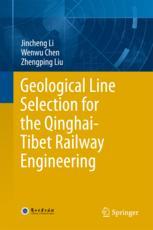

Most ebook files are in PDF format, so you can easily read them using various software such as Foxit Reader or directly on the Google Chrome browser.
Some ebook files are released by publishers in other formats such as .awz, .mobi, .epub, .fb2, etc. You may need to install specific software to read these formats on mobile/PC, such as Calibre.
Please read the tutorial at this link: https://ebookbell.com/faq
We offer FREE conversion to the popular formats you request; however, this may take some time. Therefore, right after payment, please email us, and we will try to provide the service as quickly as possible.
For some exceptional file formats or broken links (if any), please refrain from opening any disputes. Instead, email us first, and we will try to assist within a maximum of 6 hours.
EbookBell Team

5.0
98 reviewsThis book describes the second phase of the Qinghai–Tibetan railway construction project and is the first technological book discussing the geological routing of the Qinghai–Tibetan railway project on the “roof of the world.” Based on practical experience of railway construction work, it provides a substantial number of examples with detailed descriptions and conclusions. The complex geological environment of the Qinghai–Tibetan railway as well as the selection and optimization of the route are illustrated vividly and clearly with quotes, figures, photos, and tables. Connecting Golmud and Lhasa, it has a total length of 1142 km and at the Tanggula Pass has an altitude of 5072m—higher than any other in the world. A 960 km section is on a plateau at altitudes above 4000 m, and 550 km are in the permafrost region, making it the world’s longest and highest railway in the permafrost plateau region. The book is a model for the integration of theory and practice, making it a valuable reference source for civil engineering professionals working in geological routing in permafrost plateau regions, active fault zones, meizoseismal areas, nature reserves, and regions with geohazards such as steep slopes, sand and snow drifts and geothermal hazards.